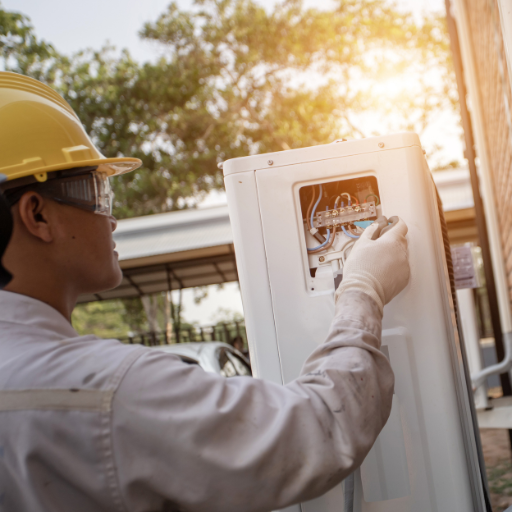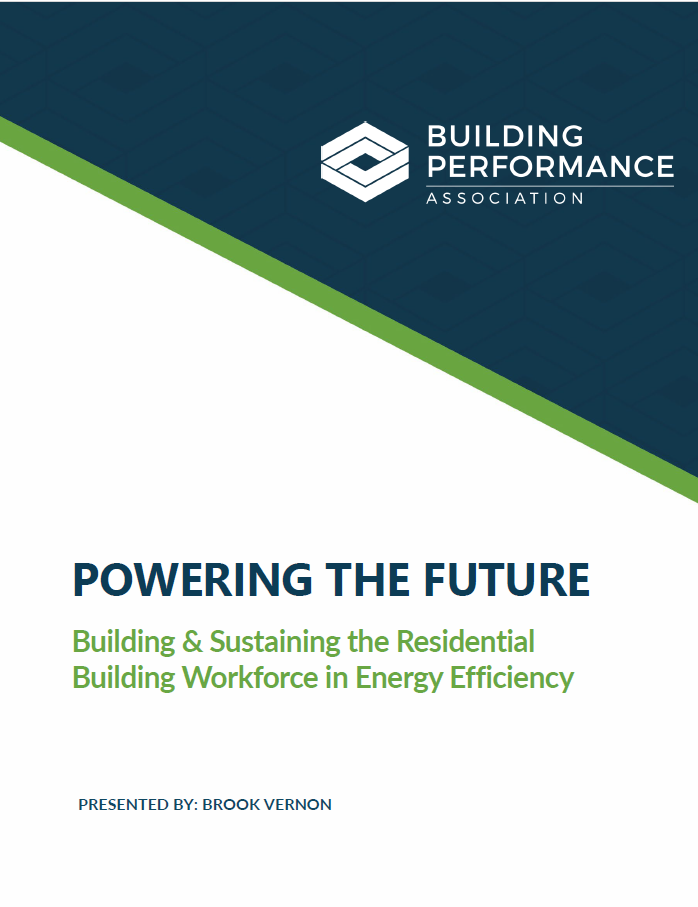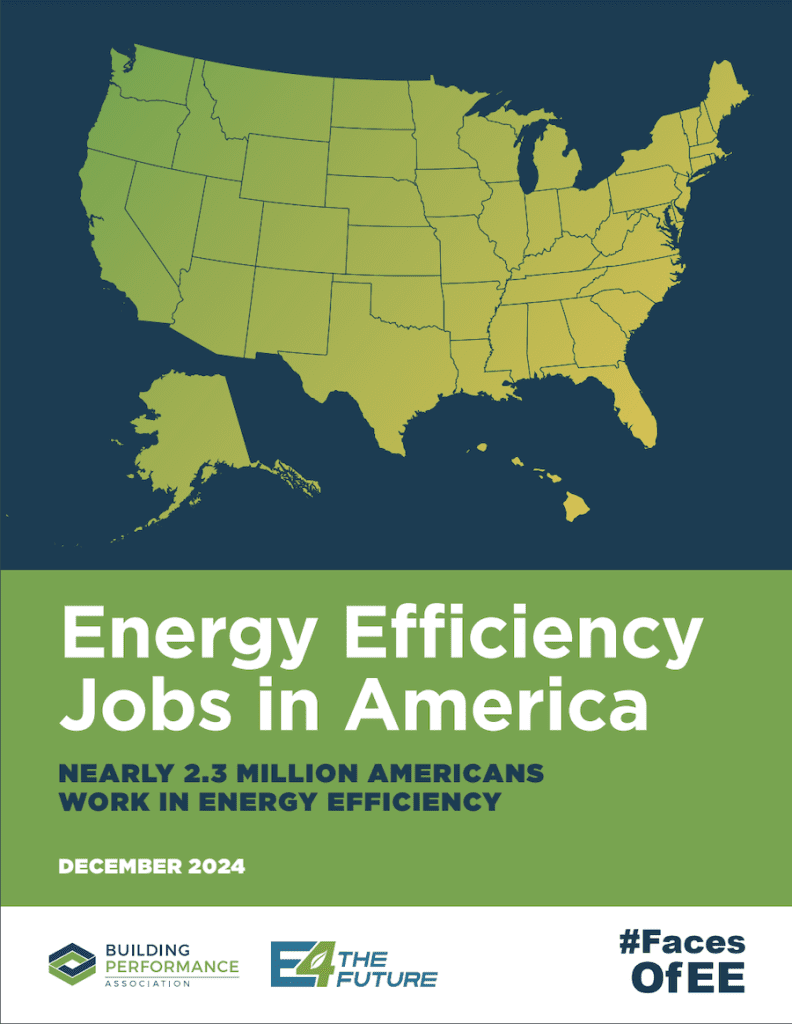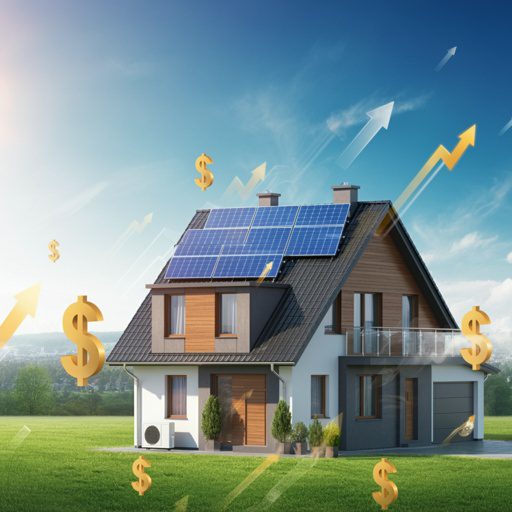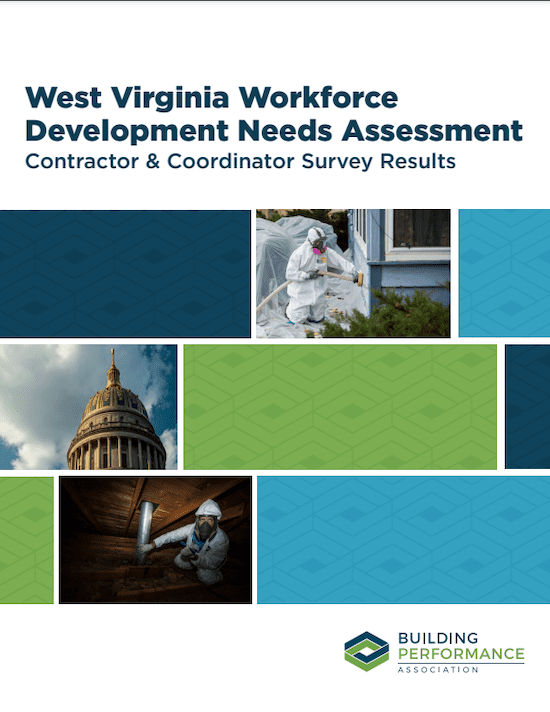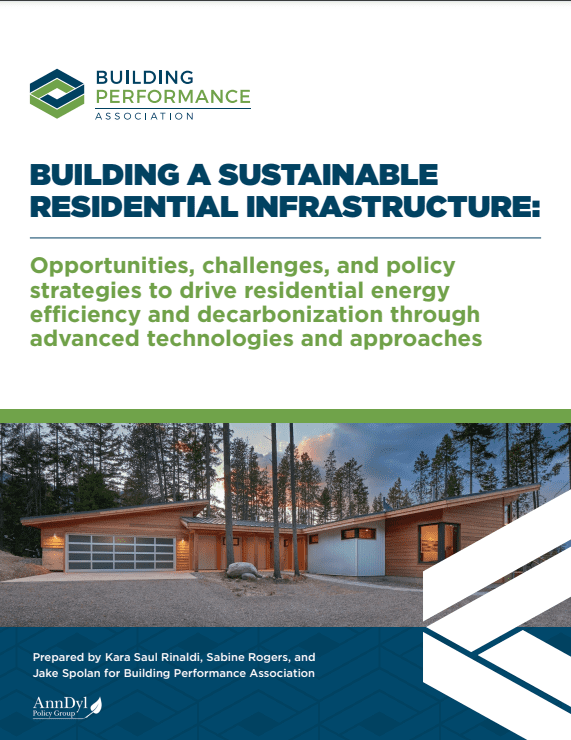Research and Reports
BPA publishes research, policy papers, and fact sheets on residential energy efficiency and home performance.
Residential Energy Efficiency Retrofit Projects That Create Jobs: Insights from the Buildings Upgrade Prize
This white paper explores early findings from the U.S. Department of Energy’s Buildings Upgrade Prize, a competitive program designed to support innovative, high-performance building retrofits. It highlights common strategies from awardees in the planning and pilot phases, including workforce training, resident education, local outreach, removing upgrade barriers, and funding integration. The paper identifies five key themes for early program success and sets the stage for future insights as projects progress.
Powering the Future: Building & Sustaining the Residential Building Workforce in Energy Efficiency
This report from the Building Performance Association (BPA), developed with support from the Pacific Northwest National Laboratory (PNNL), offers five strategic recommendations to help State Energy Offices strengthen and scale the residential energy efficiency workforce. Grounded in data, contractor feedback, and proven practices, the report serves as a practical guide for designing equitable, community-rooted workforce programs. From stakeholder engagement to registered apprenticeships, this resource lays out a roadmap to build a more skilled, resilient, and inclusive energy efficiency workforce—critical for advancing healthier, safer, and more energy-efficient homes across the country.
2024 Energy Efficiency Jobs in America Report
Energy efficiency (EE) boasted more job growth than any other U.S. energy technology sector in 2023, with nearly 75,000 new jobs added—the strongest increase for EE since 2018. Energy efficiency jobs boost the entire U.S. economy, and workers operate in almost every county of the country. The EE workforce fills a crucial role in maintaining and improving our built environment, reducing building energy use nationwide.
The Residential Capital Stack
The Department of Energy (DOE)’s Home Energy Rebate Programs, enacted in the Inflation Reduction Act (IRA) of 2022, aim to save consumers money on home efficiency and electrification upgrades to cut energy use and carbon emissions in residential buildings. The historic $8.8 billion in funding for these programs—the largest pot of money ever for home energy efficiency and electrification rebates—has tremendous potential to reduce residential greenhouse gas emissions, while also helping low- and moderate-income households better heat and cool their homes, save money on their utility bills, and increase resiliency to extreme weather. To ensure these investments reach their full potential, state rebate programs should coordinate federal, state, and utility dollars while pointing participants to additional federal tax credits. Stacking rebates and tax credits will unlock maximum decarbonization outcomes while saving consumers the greatest amount of money. Version 4 of this report, released February 2025, incorporates updated Federal program requirements from the Department of Energy (DOE), the Internal Revenue Service (IRS) and the Environmental Protection Agency (EPA). The factsheet also now covers additional key considerations for Stacking with the Weatherization Assistance Program, the Greenhouse Gas Reduction Fund, and Retail-Focused Upgrades. “This factsheet is for informational purposes only and is designed to advise based on legislation and policy guidance released by Congress, the White House, and various federal agencies including the Department of Energy (DOE) and the Internal Revenue Service (IRS). The AnnDyl Policy Group is not offering tax advice and the information provided in this document should not be relied upon as legal or accounting advice.
Contractor Perspectives for States Designing New Federal Home Upgrade Incentive Programs
BPA and the AnnDyl Policy Group have been gathering insights from contractors nationwide to help shape Home Energy Rebate programs. Our latest paper presents ten key recommendations to address contractor needs and concerns, ensuring these programs are practical and impactful. As part of the Inflation Reduction Act of 2022, these initiatives aim to boost energy efficiency, enhance indoor air quality, cut emissions, and help households save on energy costs.
Recommendations for Contractors Seeking to Engage in Historic Federal and State Incentive Opportunities
The energy efficiency incentive market offers historic support for home upgrades and provides a wide range of ways for contractors to engage. The recommendations in this document aim to help contracting companies prepare to market themselves and take advantage of current and forthcoming incentive opportunities. This report was developed under a contract with the Pacific Northwest National Laboratory (PNNL), supporting PNNL’s management of the Energy Skilled Program and other workforce efforts, and funded by the Department of Energy.
Kentucky Energy Efficiency Workforce Analysis Report
The Building Performance Association (BPA) and the Home Performance Coalition (HPC), working as interconnected entities, have published a comprehensive report highlighting key strengths, challenges, and opportunities for the energy efficiency industry in Kentucky. The report is the result of 9 months of thorough research by BPA/HPC including efforts such as in-person and virtual stakeholder meetings, a survey of industry workers, and an in-depth look at Kentucky’s current landscape and potential resources for the industry.
Maine Needs Assessment
This report is the result of intensive research into Maine's energy efficiency landscape. It includes results from a thorough survey of local contractors and highlights key strengths, challenges, and opportunities facing the industry. It also includes a list of recommendations and strategies for advancing the industry utilizing new and existing resources in the state.
Retrofitting America’s Homes: Designing Home Energy Programs that Leverage Federal Climate Investments with Other Funding
This report explores the opportunities for states to enhance residential retrofit programs by combining new federal funds with other public and private investments. It offers strategies for effectively integrating multiple funding sources to maximize impact and drive sustainable market transformation. The report also outlines eight key program design elements based on decades of experience and recent advancements to support stakeholders in achieving their retrofit goals.
National Workforce Development Needs Assessment
This assessment was designed to elicit feedback from BPA members and industry stakeholders on gaps, barriers, and challenges to developing and maintaining a vibrant home performance workforce.
West Virginia Needs Assessment
The report draws upon surveys from BPA’s DOE-funded national needs assessment to determine West Virginia companies’ needs, which will further identify the training and technical support required to grow the local energy efficiency industry.
Building a Sustainable Residential Infrastructure
Opportunities, challenges, and policy strategies to drive residential energy efficiency and decarbonization through advanced technologies and approaches.

